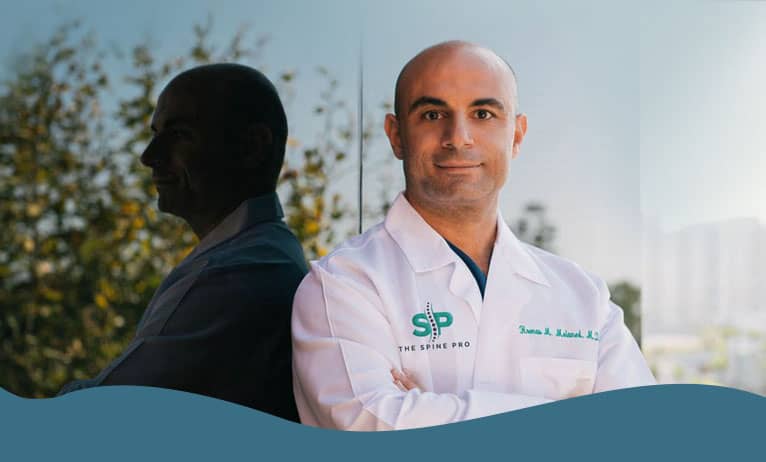5 Signs a Herniated Disc is Healing: What to Expect During Recovery
If you’ve been dealing with a herniated disc, you know how disruptive it can be—whether it’s sharp pain in your back or discomfort radiating down your legs. The good news is that herniated discs can heal, and many people begin feeling better without surgery. But it’s natural to wonder: How do I know if I’m getting better? If you’re wondering whether you’re making progress, here are some encouraging signs to look out for during your recovery journey.

How Do Herniated Discs Heal?
In many cases, herniated discs heal naturally over time. The body’s immune system can help break down the herniated tissue, reducing inflammation and relieving pressure on the affected nerves.
However, depending on the severity of the herniation, some people may experience chronic pain or symptoms that don’t improve with rest alone. In such cases, medical intervention — such as physical therapy or spine surgery — might be necessary to achieve lasting relief.
Recovery Timeline: What to Expect
Healing from a herniated disc doesn’t follow a one-size-fits-all timeline — it varies depending on factors like the severity of your herniation, your overall health, and how closely you follow your treatment plan. However, here’s a general overview of what you can expect during recovery:
First Few Days to Two Weeks
You may still experience significant pain and discomfort, but this is typically when symptoms start to stabilize with rest and conservative treatments like over-the-counter pain relievers, heat/ice therapy, and avoiding aggravating activities.
Four to Six Weeks
By this point, many people notice a reduction in pain and improved mobility. If conservative treatments are working, you’ll likely start feeling more like yourself.
Three to Six Months
Most herniated discs heal within this timeframe. Physical therapy during this period can help you regain strength and flexibility while preventing future injuries.
Chronic Cases
If symptoms persist beyond six months, it may be time to explore more in-depth treatment options with a spine specialist like Dr. Hooman Melamed.
Signs a Herniated Disc is Healing
1. Pain is Becoming More Manageable
Pain is usually the first indicator that something is wrong with your spine, but it’s also the first sign you’ll notice improvement. As your herniated disc heals, you’ll likely experience a gradual reduction in pain. Instead of sharp, stabbing sensations, the pain may dull and become more intermittent. This happens because the pressure on the nerve is easing as the body heals, either by reducing inflammation or absorbing the herniated material.
2. You’re Moving More Easily
One of the most frustrating aspects of a herniated disc is the stiffness it causes, especially in the lower back or neck. As the disc heals, you’ll find that your range of motion improves. Movements like bending, twisting, or reaching won’t feel as restricted or painful.
Increased mobility is a clear sign that the inflammation is going down, and your muscles and tissues are regaining strength and flexibility.
3. Less Numbness or Tingling
When a disc herniates, it can compress nearby nerves, causing symptoms like numbness, tingling, or weakness in your arms, legs, or other areas, depending on where the herniation is located. As your disc heals, these symptoms will start to subside. Feeling pins and needles less often or regaining sensation in previously numb areas is a good sign that your nerve function is returning to normal.
4. Decreased Reliance on Pain Medications
During the early stages of recovery, you might rely on pain relievers to get through the day. As your herniated disc heals, you should find yourself reaching for those medications less frequently. Being able to manage your pain with fewer or milder interventions is a sign that your body is healing on its own, and you’re gaining more control over the discomfort.
5. You Can Tolerate More Physical Activity
As your body heals, you’ll notice that you’re able to do more without aggravating your symptoms. Whether it’s walking longer distances, sitting for extended periods without discomfort, or returning to light physical activities like yoga or swimming, being able to move without significant pain is a great sign that your disc is healing.
Physical therapy during this stage can be particularly helpful in strengthening your core muscles to support your spine and prevent future injuries.
When to Seek Medical Help
It’s normal to experience ups and downs during your recovery, but certain signs should prompt you to seek medical advice. If you experience worsening pain, loss of bowel or bladder control, or severe weakness, it’s essential to consult a spine specialist. Chronic pain or symptoms that don’t improve after several months may require further evaluation.
Dr. Melamed’s Approach
At The Spine Pro, Dr. Hooman Melamed advocates for a holistic approach to herniated disc recovery, integrating a variety of treatments to support the body’s natural healing process. Depending on the severity of the herniation, Dr. Melamed may recommend:
- Physical Therapy: Tailored exercises to strengthen the muscles around the spine and improve flexibility.
- Anti-inflammatory Medications: To reduce inflammation and relieve pressure on nerves.
- Chiropractic Care: In certain cases, manual adjustments can help alleviate pain and support recovery.
- Minimally Invasive Spine Surgery: For patients who require more than conservative care, Dr. Melamed specializes in minimally invasive techniques that address herniated discs with smaller incisions, less tissue damage, and quicker recovery times. Unlike traditional surgeries, these procedures allow patients to return to normal activities faster, with less pain and a reduced risk of complications.
Dr. Melamed’s patient-first approach ensures that surgery is only recommended when absolutely necessary, and his focus on minimally invasive treatments means you’ll get the relief you need without enduring the lengthy recovery often associated with traditional spine surgeries.
If you’re unsure whether your herniated disc requires surgery or conservative care, Dr. Melamed can provide expert guidance and help you determine the best path forward. Click here to request a consultation.
Healing Takes Time, But Progress is Possible
Healing from a herniated disc can be a slow process, but the good news is that many people experience significant improvement with time and the right care. By paying attention to signs like reduced pain, better mobility, and fewer neurological symptoms, you can track your progress and feel confident that you’re moving in the right direction.
If you’re not seeing the improvement you hoped for, or if you want to explore advanced treatment options, schedule a consultation with Dr. Hooman Melamed at The Spine Pro. He can help you determine the best path forward, whether through continued conservative care or minimally invasive surgical options to get you back to a pain-free life.






